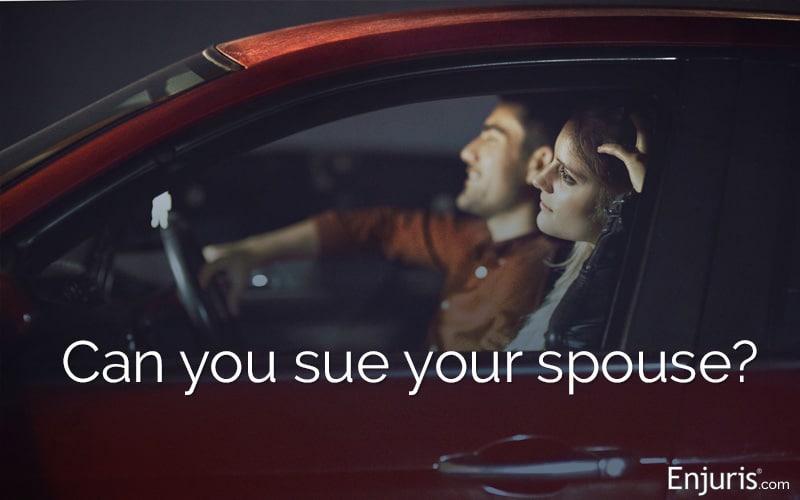
New York is a no-fault insurance state, which means your first claim after an accident is usually against your own insurance policy
If you’re going to drive a car in New York, then you’re going to need insurance.
Insurance is required in all 50 states, but each state has its own set of laws and rules. Even if you weren’t required to purchase car insurance, it would still be in your best interest to do so. Any driver or passenger can be involved in an accident at any time, and expenses related to car accident injuries can add up quickly.
Types of New York auto insurance
In New York, every motorist is required to have the following 3 types of insurance:
- No-fault personal injury protection (PIP)
- Liability
- Uninsured motorists
Your insurance company will likely offer a single policy that incorporates each of the 3 requirements under New York law. The required coverages are minimum amounts, so you can always choose higher policy limits for additional protection.
1. New York no-fault insurance
No-fault insurance is also called Personal Injury Protection (PIP). The intent of no-fault insurance is to allow an insurance policy to cover medical treatment claims as quickly as possible without spending time determining who was at fault for the accident.
Basic coverage is $50,000 per person for you (the driver) and your passengers, as well as any pedestrians who might be involved in an accident with your car.
You may only file a personal injury lawsuit for a New York car accident if economic losses exceed your no-fault benefits, or if you have non-economic damages or a “serious injury” that meets certain requirements of the Insurance Law.
| No-fault insurance typically covers: | No-fault insurance generally does NOT cover: |
|---|---|
| ✔ Medical treatment for personal physical injury for you, your passengers, or pedestrians. “Medical treatment” includes accident-related medical and rehabilitation expenses. | ✘ Auto body repair to your car |
| ✔ 80% of wages for lost work time, up to $2,000 per month for up to 3 years from the date of the accident (with statutory offsets for NYS disability, workers’ compensation, and federal Social Security benefits). | ✘ Damage to another person’s car or other personal property |
| ✔ Up to $25 per day for 1 year for other expenses like transportation to medical treatment, household assistance, etc. | ✘ Pain and suffering, emotional distress, or other non-economic damages |
| ✔ $2,000 death benefit to the estate of a person killed in an accident who is covered under the no-fault policy. | Most insurance policies will not provide no-fault benefits if the insured driver was:
|
2. New York automotive liability insurance
Liability insurance covers bodily injury and property damage. It protects you and anyone who has your permission to drive your car.
Just like you would pursue a claim against your own no-fault insurance in an accident, the other driver in an accident with you would pursue a claim against their no-fault insurance for their injuries.
Tweet this
If the accident results in serious injury to the other party, their insurance company can make a third-party claim alleging that you were negligent and at fault for the accident. If the injuries aren’t covered by the other party’s PIP, or if there’s property damage to their car, that’s when your liability insurance kicks in.
The minimum amounts for liability insurance coverage in New York are:
- $10,000 for property damage for a single accident
- $25,000 for bodily injury, and $50,000 for the death of a person involved in an accident
- $50,000 for bodily injury, and $100,000 for the death of two or more people involved in an accident
If the accident happens in another state or in Canada, your policy will cover injuries up to the minimum liability requirement for that state or province.
3. Uninsured motorist coverage
You could be doing all the right things but still end up in trouble if you’re in an accident involving an uninsured motorist. Your New York auto insurance policy is required to include uninsured motorist (UM) protection at the same bodily injury minimum amounts required for liability insurance. You can also choose an extension that covers out-of-state accidents for an additional cost.
If you, someone who drives your car, or one of your passengers is injured in an accident with an uninsured vehicle or in a hit-and-run where you have no insurance information, your claim should be filed with your own insurance company under your UM coverage.
Proof of insurance coverage in New York
If you’re involved in an accident or pulled over for a traffic infraction, you’ll probably be asked to show your insurance card.
Your insurance company should provide you with 2 insurance cards when you purchase or update your policy, and then periodically for the length of the policy term. When your vehicle is registered for the first time, one card is submitted to the DMV and remains on file. After that, your insurance company should electronically send proof of insurance to the DMV on an ongoing basis.
The other card should remain in your car along with your registration. If you don’t have one, contact your insurance company and ask them to send it either by mail or email — or you might be able to download it through your online account on the insurer’s website.
Penalties for driving without insurance in New York
You must surrender your vehicle registration and license plates if you cancel your automobile insurance policy. The DMV will suspend your registration and driver’s license if you fail to do this.
Driving an uninsured vehicle (or allowing someone else to drive your uninsured vehicle) will result in a 1-year revocation of your driver’s license.
You can also be fined up to $1,500 or receive a jail sentence of up to 15 days for driving uninsured if you’re in an accident.
How do I choose a NY automotive insurance policy?
Fortunately, this is simpler than it sounds. A New York auto insurer will combine the required insurance into a single policy. If you have a current auto insurance policy in New York, you already have your no-fault, liability, and uninsured motorist.
There are some optional add-ons that you might wish to include:
- Optional basic economic loss (OBEL): Offers an extra amount of coverage over the no-fault limit of $2,000 per month for 36 months for lost income as a result of an accident.
- Supplemental uninsured motorist: This extends your uninsured motorist coverage to accidents that happen outside of New York state.
- Medical payments: This coverage would reimburse you and your passengers for medical or funeral expenses, regardless of whether you were at fault.
- Collision: This covers any damage to your car due to any collision — whether it’s with another car, a guardrail, tree, or any other object.
- Comprehensive: This insurance is for any damage to your vehicle that’s not caused by a collision. This might include theft, vandalism, hail, and other damage.
When to call a personal injury lawyer
If you were in an accident and your insurance company isn’t adequately covering your damages, you should consult a personal injury lawyer who specializes in insurance bad faith and car accidents.
Handling insurance after a car accident
Your insurance exists to provide you benefits if you’re injured. This is 100% true.
But it doesn’t mean that the insurance company is always on your side.
An insurance company makes money when users pay premiums to maintain their policies. When the insurer has to pay damages to a policyholder, that costs the company money. Even when paying the damages for its own customer, the insurance company’s objective is to pay out the least amount of money that you’ll take to cover your costs. By paying out less than what premiums cost, the insurance company makes money.
Your insurance claim adjuster isn’t your friend. Their job is to spend the least amount of their boss’s money — not to be generous to you.
If your medical treatment has concluded and the insurance company has offered a sufficient amount to cover your financial losses, you’re in good shape. But if you require continuing medical treatment, you’re still out of work as a result of the accident, or you might have other related expenses, the insurance might not accurately account for your future costs.
To avoid being shortchanged, consult a personal injury lawyer.
This is a different relationship from the one you have with your insurance company. With a lawyer, you’re not a customer, you’re the client. And in a personal injury lawsuit, your lawyer likely doesn’t get paid until you receive your damages. Your lawyer’s job is to get the best possible settlement and highest amount of damages for you. They’ll consult with financial and medical experts in order to accurately assess how much you’re entitled to in damages for current and future expenses related to your accident.
Enjuris offers a free New York personal injury lawyer directory you can use to find the best attorney who will help negotiate a settlement, provide a defense to liability, and handle all other aspects of your personal injury claim.
NYS Enacts New Law for Spousal Liability for Car Insurance
It used to be that you had to opt-in if you wanted your spouse to be covered in case you caused an accident; a new New York law makes it the opposite.
See our guide Choosing a personal injury attorney.

